Archive
2020
KubaParis
Coeurs Simples
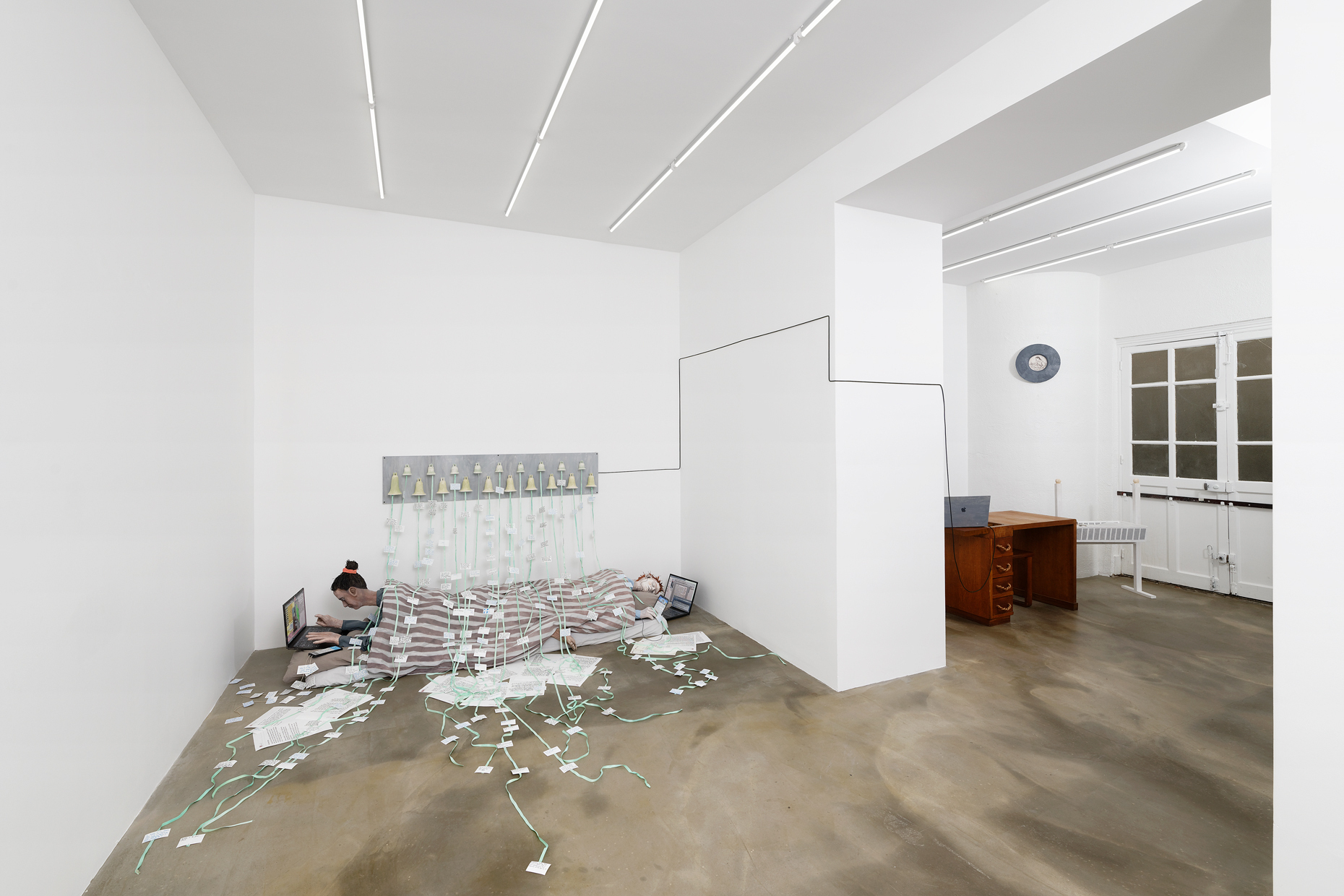

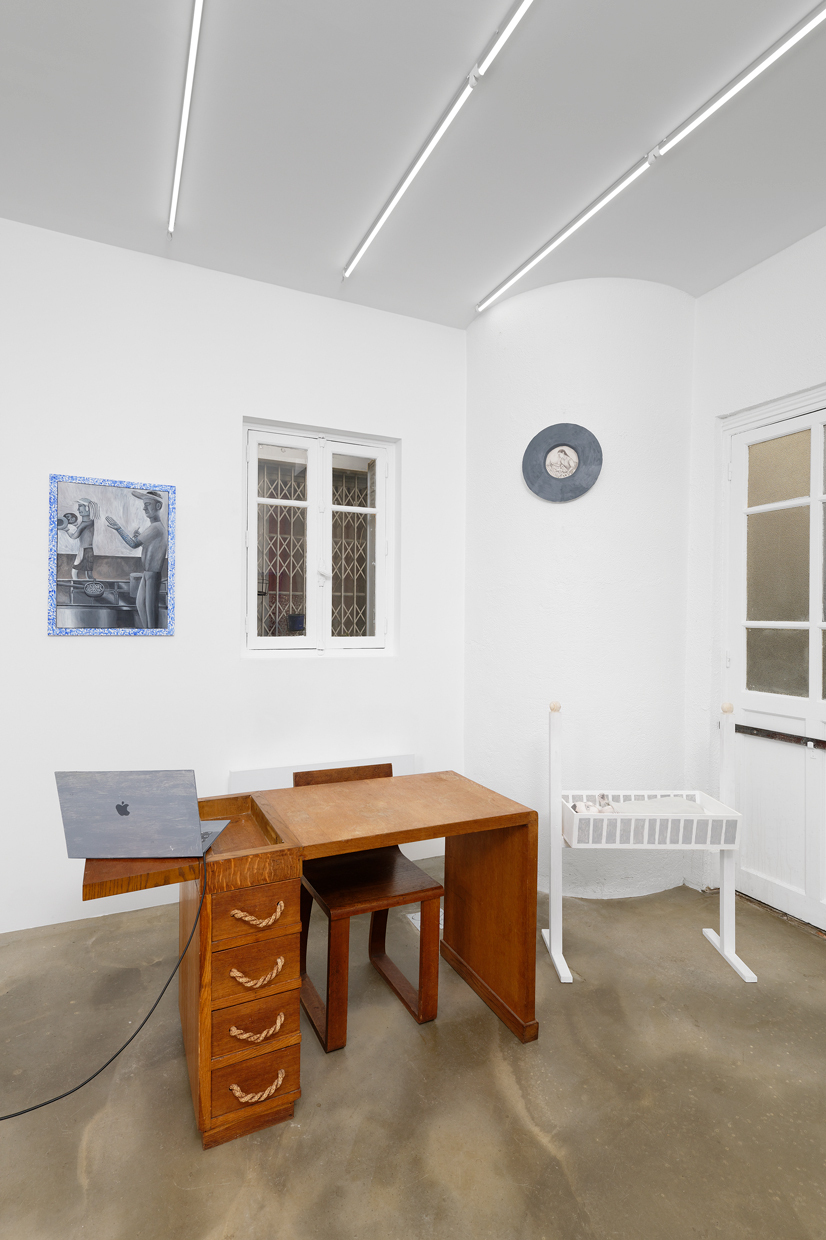
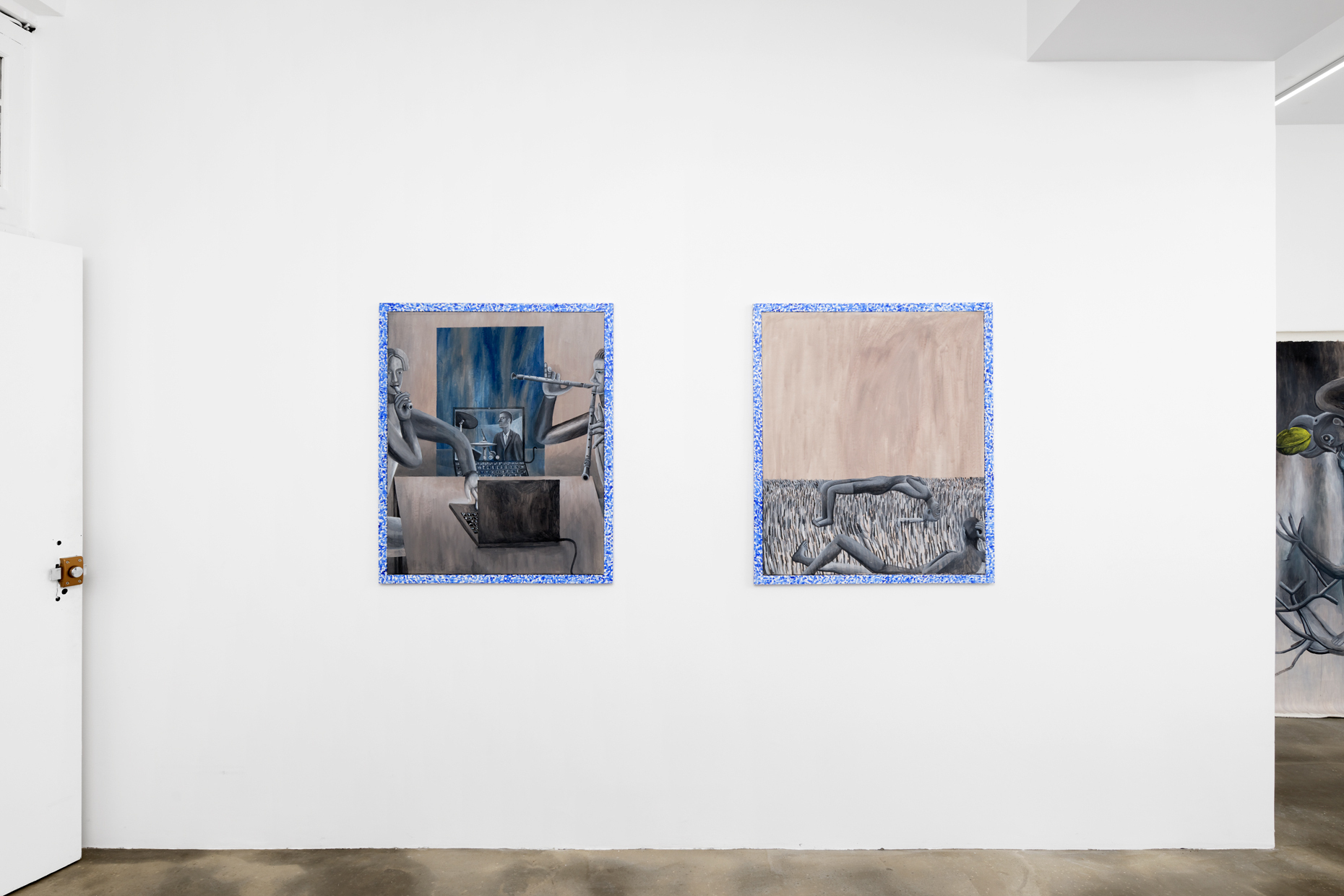
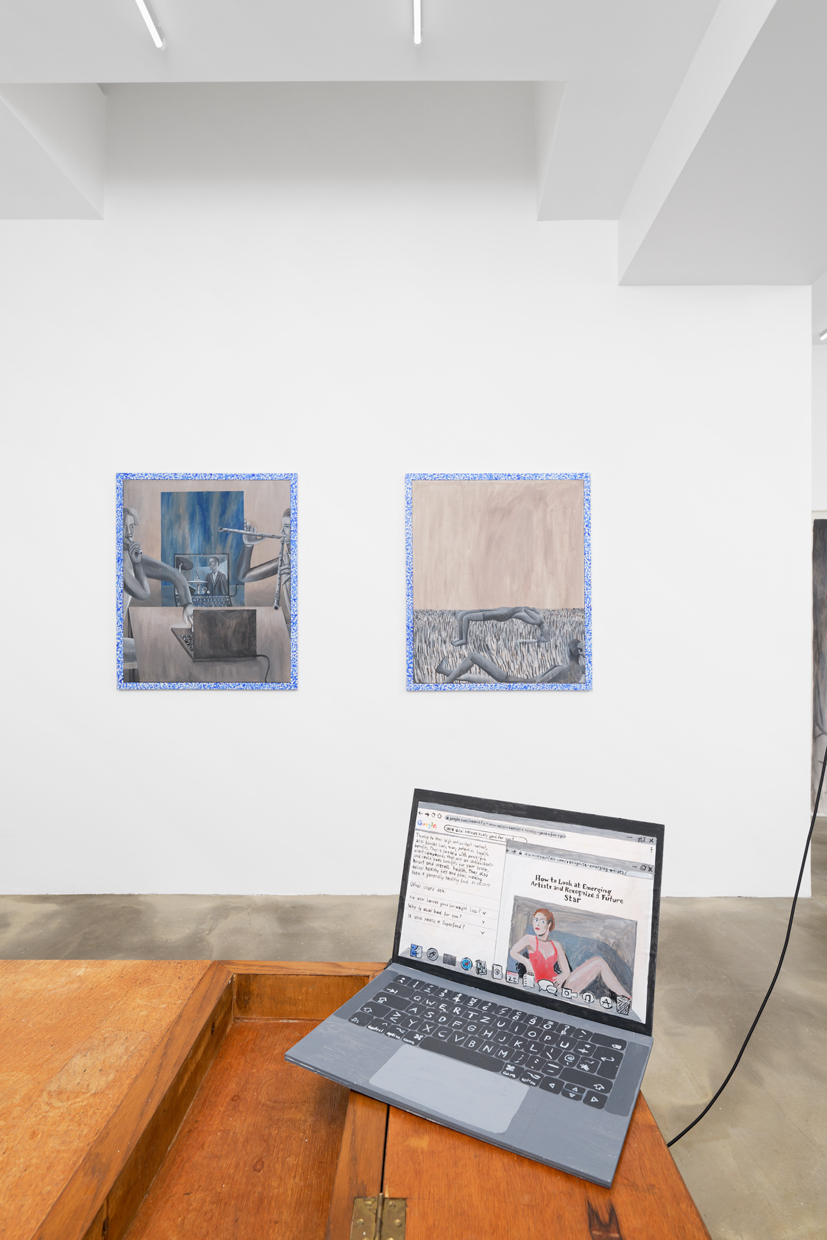

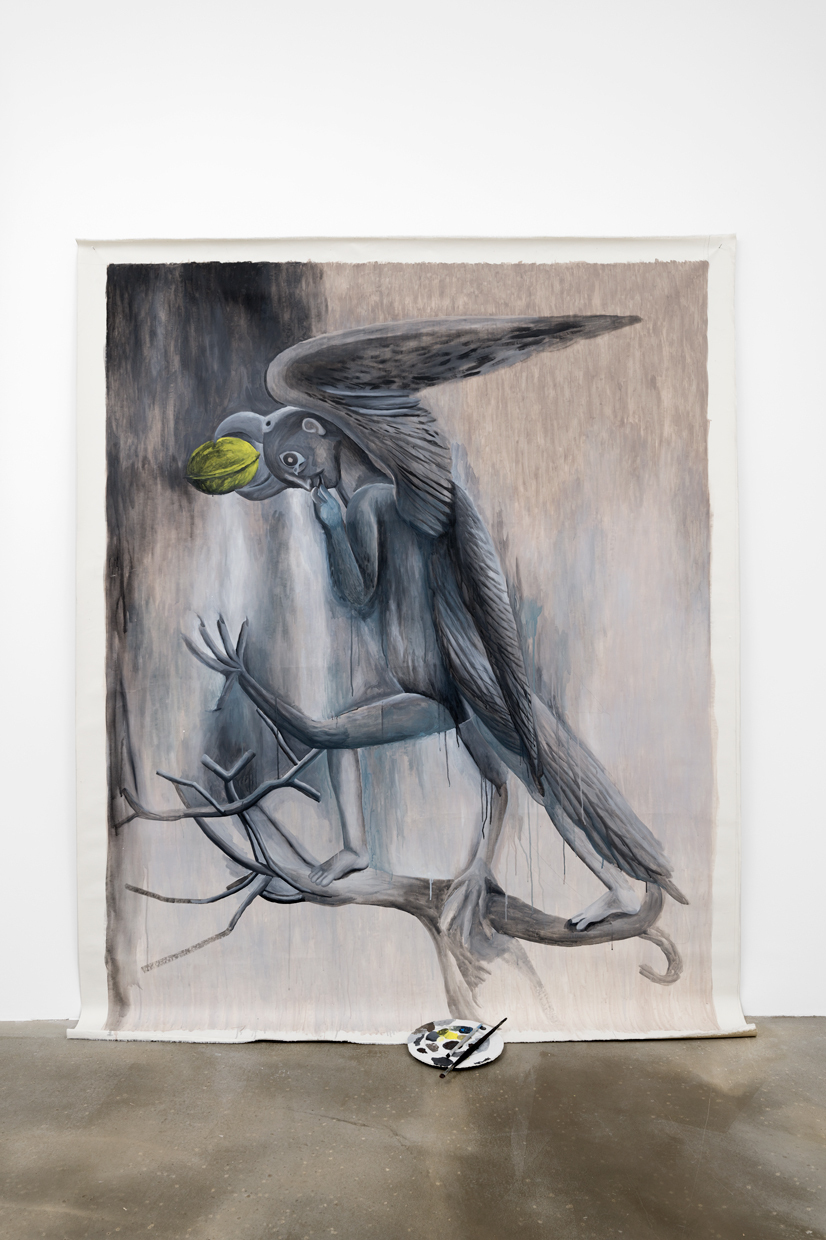
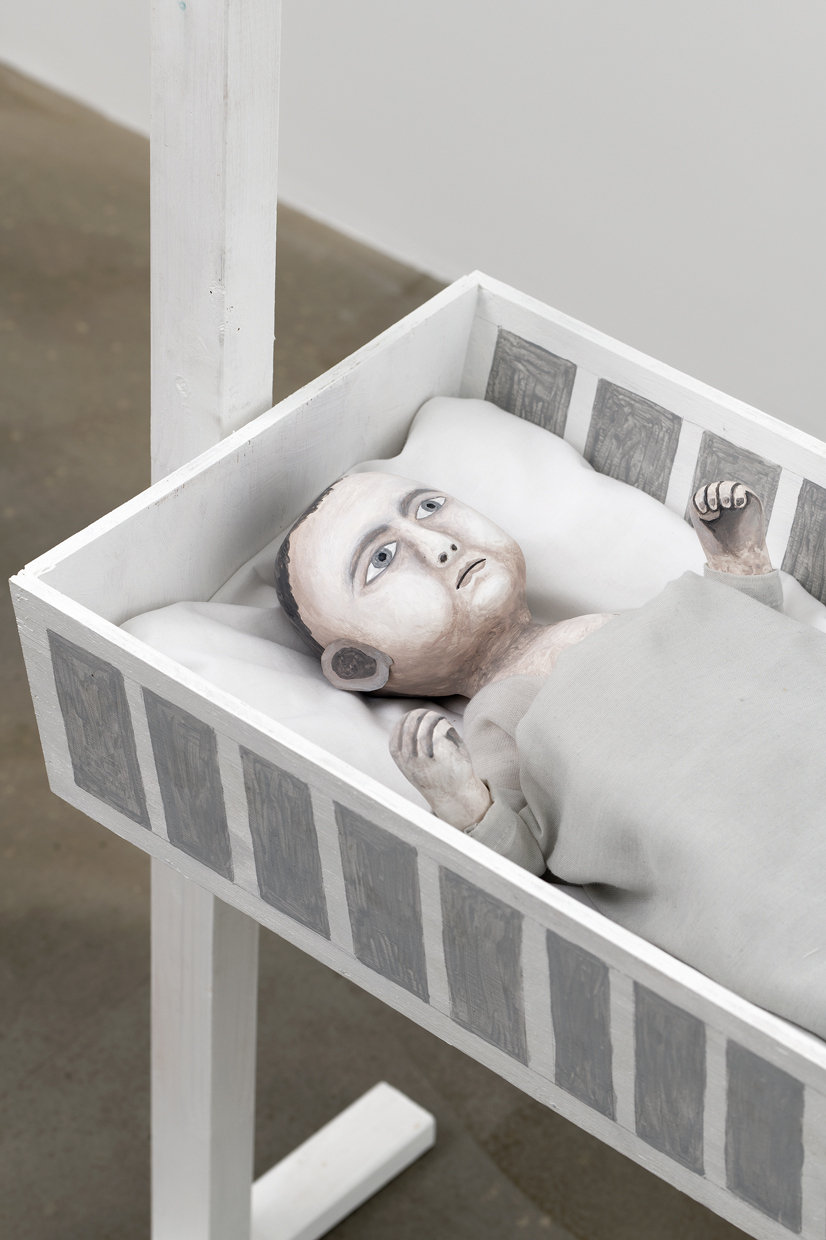
Location
Sans Titre (2016)Date
04.09 –09.10.2020Curator
Marie MadecPhotography
Aurélien MoleText
Is society about to rest on a class of servants again? Are we on a our way back into the Victorian age, back into the 19th century? There is much to suggest this. The service in- dustry is known to have expanded enormously. One half of society makes its living by serving the other. Serving, not only at Starbucks and McDonald’s. ‘Service with a smile’ has also taken root in the cultural sector, where freelancers appear to have become mo- dern servants. Agnes Scherer’s installation-based work leads us back into the era of the maids-of-all-work, and, at the same time, into the reality of today’s cultural freelancers who sit at the bottom end of the industry. The show’s title ‘Coeurs Simples’ gives a hint: Flaubert’s famous story ‘A Simple Heart’ describes the fate of a loyal servant in 19th cen- tury rural France. A parrot – first alive, then taxidermied – becomes the sole object of her affection, charged with a hope for something beyond her life of never-ending toil. Flau- bert’s naive Félicité is by no means an artist, but a certain measure of cultivated naivety seems to make it easier for artists (and other cultural freelancers) as well to embrace the fate of casualization and precarity. As Félicité deliriously envisions ascending into heaven with her bright-feathered “holy ghost”, artists are fixated on the mirage of their eventual ‘breakthrough’: “Is this the year I’m gonna make it?” is typed into the text field of an online oracle . Fame and wealth, the promise of the art market – for most artists they remain a stuffed parrot.
Occupying the entire gallery space, Scherer’s installation leads us along the preca- rious realities of life in the culture industry. The modern maid-of-all-work is permanently available and communicates all the time. Scattered all over the gallery’s floor one finds (painted) prints of e-mails written to and by employers, gallerists, collaborators and the job centre. The centrepiece of the exhibition is a long bell board: an antiquated call sys- tem, the cables of which connect the gallerist’s desk in the antechamber with the exhi- bition space in the back. There, beneath these servants‘ bells, a sculptural arrangement represents two women lying on a mattress, working with laptops and mobile phones. We recognise them as revenants of the artist herself. Their contradictory state between rest and hounded productivity conveys a form of existence in which the boundary between the private and the professional is completely blurred: life becomes a 24/7-job.
Not only does Scherer “distort to recognizability” the reality of this kind of daily life by re- creating props and utensils – the stuffed parrots – of the era of communication, she also uses the distancing effect of anachronism to bring the present into sharper focus. The communication technologies of the 19th century meet those of the 21st; the servant bell meets the mobile phone. Echoed on a painted laptop screen, we find aVictorian image of a servant who is about to place a new-born in the hatch of an orphanage. She hesitates and has to choose – comparable to freelancers today who have to decide between parenthood and a professional life which is based on short-term (or no) contracts, total flexibility and, therefore, childlessness. As in Scherer’s previous works, periods of history become interlocked.The 19th century appears amidst the 21st.The gallery becomes a negotiation space between an old and a new society resting on a class of servants. Is the 19th century repeating itself as a farce? A tragedy? Or tragicomedy? In any case, in Agnes Scherer’s work, past and present are merged in a puppet show, the art world appears mechanically dramatized as plaster figures flounder on the strings of the business. Scherer’s theatre of the “simple heart” draws the image of a reality in which servants of the past meet those of the present.
- Oliver Marchart
Agnes Scherer (b. 1985 in Germany) develops unique forms of presentation by inscribing hand made artifacts into holistic theatrical frameworks.With her elaborate operettas and narrative installations she unfolds pictorial programs in space and time, exploring va- rious forms of object theatre and their potential to lend artists and their works a magical agency. The situations she creates feel both playful and urgent, raising existential ques- tions and transporting critical discourses. A persistent questioning that runs through her work aims at power relations and their underlying psychologies. Scherer‘s first operetta Cupid and the Animals was granted the Nigel Greenwood Art Prize in 2015 and presented at the Museum Ludwig, Cologne, in 2017 as well as byTRAMPS in London (2017) and New York (2018). In 2019, her second elaborate work within this format, The Teacher, was pre- sented by Kinderhook & Caracas in Berlin and is going to be restaged at Cabaret Voltaire, Zürich, in October 2020. Also in October 2020 Scherer is going to present the first part of her third operetta project The Salty Testament at 1646 (Boekhorststraat) in The Hague. The artist‘s narrative installation The Very Hungry at the Berlin project space Horse & Pony was granted the Berlin Art Prize in 2019. Agnes Scherer lives and works in Berlin.
Oliver Marchart